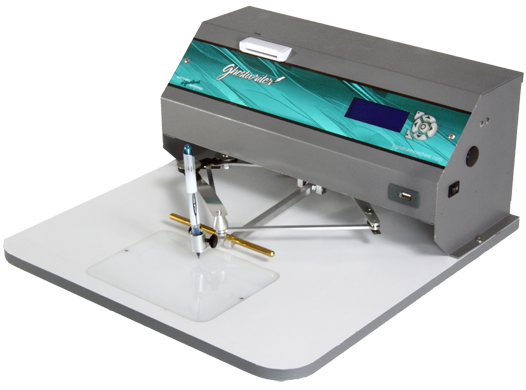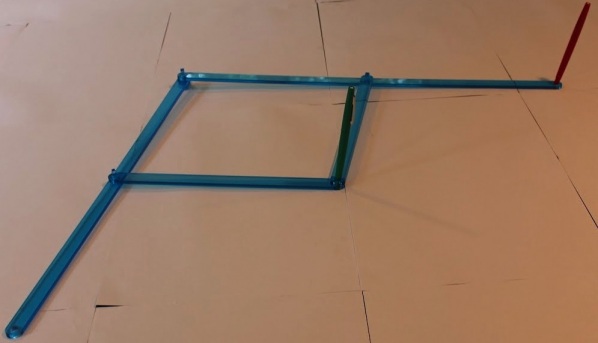Math Monday: Linkages – The World “B.X.”
by Glen Whitney
Math Monday continues its multi-week adventure into the wonderful world of linkages. See the Linkages series introduction for the MoMath Linkage Kit, an introduction, and general instructions.
Here’s a linkage of potential household practicality, especially in the days “B.X.” — Before Xerox. Back then there was no “enlarge” button to give you a blow-up of that drawing you were interested in. So what could you do? Recall our very first linkage, the scissors jack, expanded all of the strokes we made on the input point, although it also rotated them and made a mirror image. Well, it turns out that if you take some of those same parts and flip some around, you end up with the “pantograph,” a linkage that duplicates its input at a different scale. Pantographs have found numerous uses over the years in drafting, minting, milling, and signature machines, some of which are even still sold today. Now, you can build your very own:
Now, you can build your very own:
Pantograph
Ingredients: Two 60-bars with 30-holes (A and C), two 30-bars (B and D). Four linkers, and two pens.
Directions: Link A30 to B and A60 to C0. Link the free end of B to D with a pen. Link the free end of D to C30, and put a pen in C60. It should look like this: To use: Anchor A0 anyplace where it is free to rotate but not move. Now anything you draw with the pen at B-D is doubled by the pen at C60; or conversely, anything you draw at C60 is shrunk by half at the pen at B-D. Here’s ours after writing our “signature”:
To use: Anchor A0 anyplace where it is free to rotate but not move. Now anything you draw with the pen at B-D is doubled by the pen at C60; or conversely, anything you draw at C60 is shrunk by half at the pen at B-D. Here’s ours after writing our “signature”: I’ll close with two questions: Which pen was used to write with in this picture? And can you construct a 4:1 pantograph from the pieces of the MoMath Linkage Kit?
I’ll close with two questions: Which pen was used to write with in this picture? And can you construct a 4:1 pantograph from the pieces of the MoMath Linkage Kit?
This article first appeared on Make: Online, October 8, 2012.